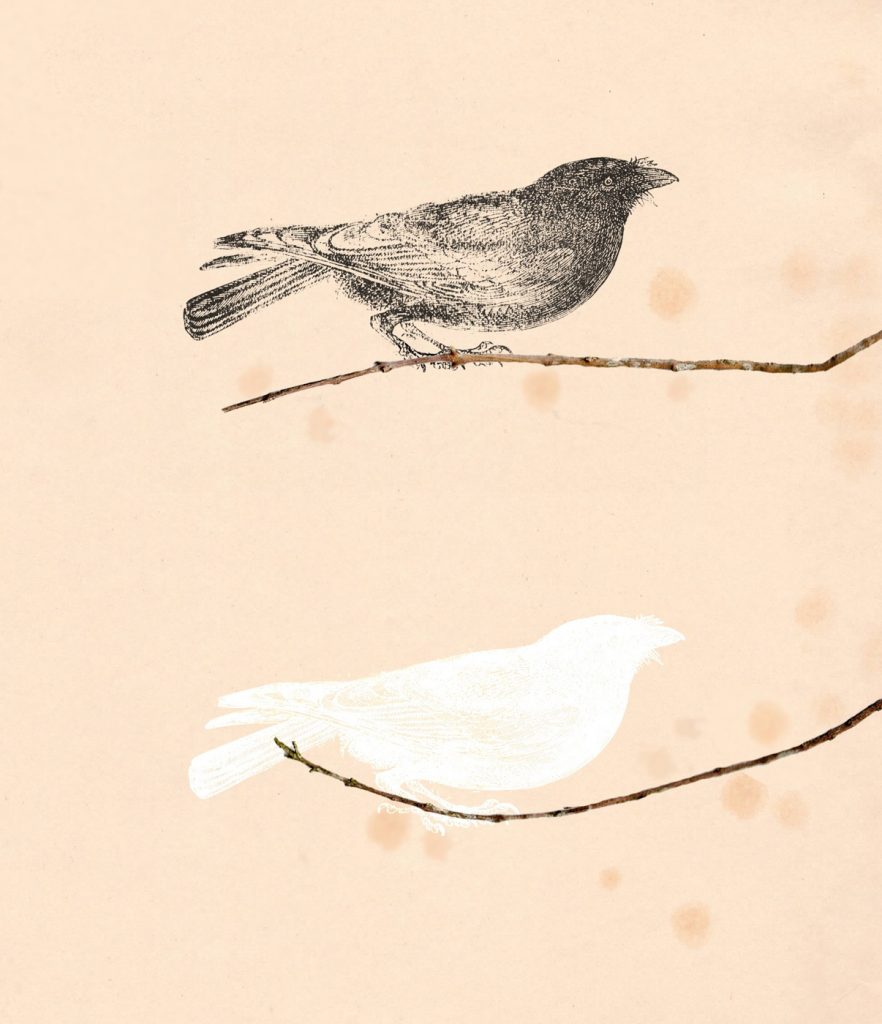a lonesomeness yet
the desire to be alone
the ghost of Basho
–Kelly Shaw
In 1680, the year he assumed leadership of the school of poetry founded by his teacher Nishiyama Soin, Matsuo Basho wrote a haiku that most scholars regard as the first verse in his mature style:
onto a bare branch
a crow has just settled down
this autumn evening
The poem is famous for its stark imagery, which stood in contrast to the work of Basho’s contemporaries, who were obsessed with wit and wordplay. “The poetry of other schools is like colored painting,” he wrote later. “The poetry of my school should be written as if it were painted in black-ink.”
If the image is somber, the mood is even more so. “The poet, tired of viewing spring flowers and autumn leaves, distilled the dusky loneliness of the fall season in the image of a crow,” wrote an early commentator. “On a desolate autumn evening, his soul alighted on the crow.”
Basho chose a career that demanded constant interaction with other poets. And yet, he was drawn more and more to solitude with each passing year. Toward the end of his life, he would sometimes hang a “No Visitors” sign on the gate outside his hut—his lonesomeness and his desire for aloneness having made an uneasy truce. The Best of Season Haiku for Fall 2024 alludes to that period of his life.
The turn of thought is deceptively simple: One can miss others and still crave solitude, enjoy being alone and still long for a friend. But there is more to the poem than that.
Because of their brevity, haiku tend to be linguistically elusive. Is Basho’s poem about a bird, a branch, an autumn nightfall, or Basho himself? Or is the meaning of the poem to be found in the “dusky loneliness” of all four elements thrown together? By contrast, Shaw’s haiku is notable for its complete absence of any image apart from “the ghost of Basho,” a spectral presence that may not even be visible.
On first reading, we are likely to feel that the poet has captured the essential contradiction of Basho’s emotional life—the mood swings that manifested alternately between riotous verse-writing parties and the journeys to parts of Japan where he could wander for hours without seeing a single soul. But the word “ghost” can have many meanings.
Each autumn, to celebrate the anniversary of Basho’s passing on November 28, 1694, poets across the world write about the man whose spirit still defines the Way of Haiku. Shaw’s poem belongs to that tradition, even though its subject is not really Basho.
The path of poetry is driven by contradictory impulses: to reflect in solitude and to share the fruits of that solitude with others. To submit to the rigors of that path, as the poet has done, is to embrace a paradox that is almost a form of possession. “A lonesomeness yet / the desire to be alone.” The words are not a description but a confession. Basho is inside of him now.
♦
The Tricycle Haiku Challenge asks readers to submit original works inspired by a season word. Moderator Clark Strand selects the top poems to be published in Tricycle with his commentary. To see past winners and submit your haiku, visit tricycle.org/haiku. To read additional poems of merit from recent months, visit our Tricycle Haiku Challenge group on Facebook.
Thank you for subscribing to Tricycle! As a nonprofit, we depend on readers like you to keep Buddhist teachings and practices widely available.
